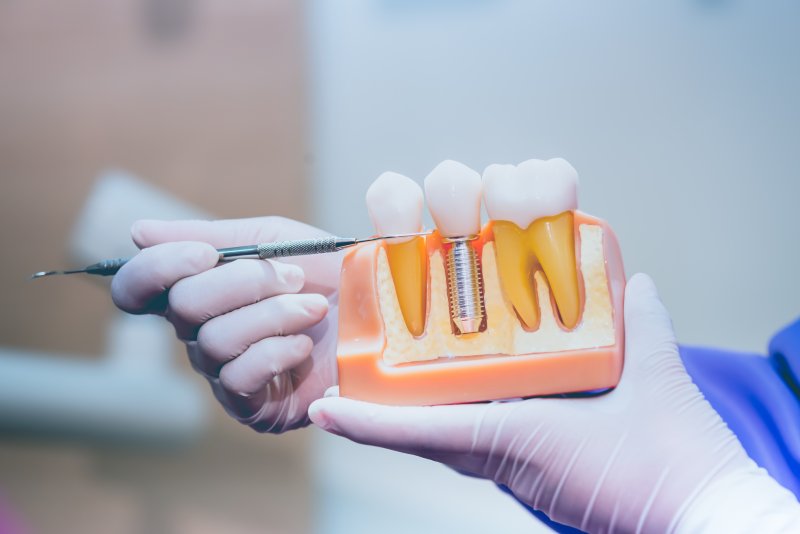Restorative Failure: Removing a Failed Dental Implant
February 12, 2025

While they rarely ever do, dental implants can fail from time to time. Dentists will then remove these faulty posts to prevent worse issues. With all that said, you may wonder: What does removing a failed dental implant involve? The question is a fairly important one, so your Daytona Beach practice is here to answer it. Just keep reading to learn what makes dental implants fail, how implant removal works, and what comes after removal.
What Makes Dental Implants Fail?
Rather than one thing, dental implant failure can have various causes. The most common of these are:
- Low Jaw Density – A jaw may lack the density to support dental implants, leading the posts to fail and fall out. That’s especially likely for those who get implants after prolonged tooth loss.
- Peri-Implantitis –If you’re unlucky, you could get an oral infection around your implant. This condition (i.e., peri-implantitis) harms the tissues near your post and causes it to fail.
- Trauma –If you suffer a mouth-related accident or injury, your implant could fail as a result. A strong blow to your oral cavity can dislodge the post and compromise its integrity.
See your local dentist to learn why your own dental implants failed. After a brief oral exam, they can diagnose the precise cause.
How Does Implant Removal Work?
A dentist must remove failed dental implants to prevent worse problems later. This process often depends on the patient’s situation.
Many specifics relate to a dental practice’s technology. For example, many dentists use a trough bur to cut bone along an implant’s edge; doing so helps with removal. Other dental providers have advanced “adapters” that can yield high torque. For these latter dentists, an “adapter” lets them remove an implant without cutting any bone tissue.
Whatever their exact method, trust that your dentist’s work will be painless. They’ll have you under anesthesia or sedation before they remove the post.
What Comes After the Removal?
Once a dentist removes your dental implant, you must let your mouth heal. This recovery period ensures your oral health remains stable over time.
“Aftercare” for dental implant removal should include several practices. For one thing, you must only drink cold beverages until the anesthesia wears off; you risk burning your mouth otherwise. You also shouldn’t touch the former implant site with your fingers or tongue. If you do, you could dislodge the forming blood clot and delay your recovery.
While never ideal, removing a failed dental implant can protect your smile. Keep that in mind as you consult your dental provider about treatment.
About the Practice
Indigo Dental of Daytona Beach is based in Daytona Beach, FL. Led by Dr. David R. Loyd, our practice takes a “total health” approach to each patient’s dental care. That means we tailor our preventive, cosmetic, and restorative services to benefit your whole body, not just your teeth and gums. You can trust us to enhance your oral health in ways that only help! For more details or to book a visit, please contact us on our website or by phone at (386)-253-3629.
No Comments
No comments yet.
RSS feed for comments on this post.
Sorry, the comment form is closed at this time.
